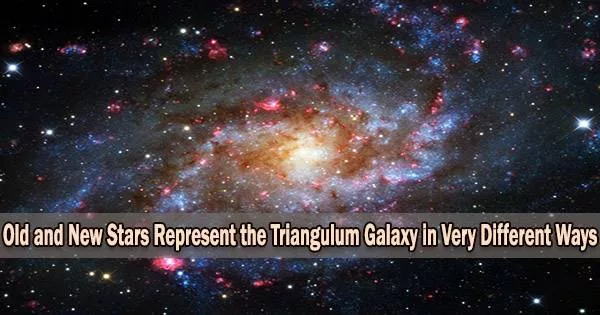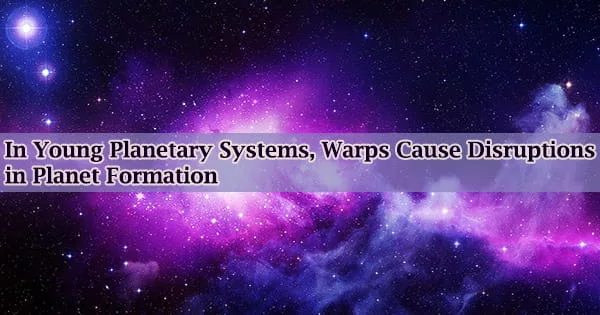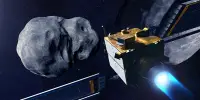The Triangulum Galaxy is a spiral galaxy located approximately 3 million light-years from Earth in the constellation Triangulum. Astronomers have been gazing at the Triangulum galaxy for centuries. But they’ve never seen it quite like this.
On Jan. 11 at the 241st meeting of the American Astronomical Society in Seattle, a team led by scientists at the University of Washington and the Center for Computational Astrophysics will unveil results using the Panchromatic Hubble Andromeda Treasury Triangulum Extended Region or PHATTER survey. The project is providing astronomers with their first comprehensive view of the various star populations that make up the Triangulum galaxy.
Researchers have found that depending on the age of the stars, this satellite galaxy, a close friend of the much larger Andromeda galaxy, has two radically different topologies.
“The youngest stars and the oldest stars in the Triangulum galaxy which we can separate out using multiple wavelength filters on the Hubble Space Telescope are organized very differently,” said Adam Smercina, a postdoctoral researcher at the UW. “This is surprising. For a lot of galaxies, like the Milky Way and Andromeda, the stars are distributed roughly consistently, regardless of their age. That is not the case with Triangulum.”
Triangulum, which measures roughly 61,000 light years across, is our local group’s third-largest galaxy, behind only Andromeda and our own Milky Way. It appears to have a “flocculent” structure in lower-resolution pictures, with several little spiral arms extending from a clearly defined center.
A major goal of the PHATTER survey was to generate the kind of detailed, high-resolution data on this prominent satellite galaxy that will allow us to examine its structure in depth, trace its history of star formation and compare what we see to theories of galaxy formation and evolution.
Adam Smercina
In 108 orbits over the period of more than a year, the Hubble Space Telescope collected hundreds of high-resolution photos of various regions of the Triangulum galaxy for the PHATTER study.
The group tiled these smaller-section photos to produce a thorough, high-resolution dataset for Triangulum that revealed the galaxy’s individual stars for the first time over a sizable area in its center.
Thanks to Hubble’s array of filters, researchers could also separate those stars by age. The distribution of younger, more massive stars that were under a billion years old generally followed the Triangulum’s well-known “flocculent” pattern. However, the distribution of its older, redder stars follows a totally distinct pattern, with two spiral arms emanating from a rectangular bar in the galaxy’s core.
“This was a largely unknown and hidden feature of the Triangulum galaxy that was very difficult to see without this kind of detailed survey,” said Smercina.
Although older stars make up the majority of Triangulum’s mass, Smercina claims that they are fainter than their younger counterparts. That might help to explain why low-resolution photographs of the galaxy tend to show the “flocculent” pattern more often.
The survey team is likewise unsure of the reason for the disparate distributions of young and old stars in Triangulum. There are still many unknowns about the genesis and evolution of satellite galaxies in general.
Satellite galaxies can be shaped by interactions with their parent galaxies and come in a wide variety of forms. The Milky Way’s largest satellite galaxy, the Large Magellanic Cloud, for example, is similar in size and mass to Triangulum, but has an irregular and globular shape due to its proximity to our own galaxy.
The ongoing investigation of the PHATTER survey should provide information on the formation and interactions of these types of galaxies with their larger companions. By tracing the history of star formation in Triangulum and comparing different regions of the galaxy, the team hopes to build on these preliminary findings.
“A major goal of the PHATTER survey was to generate the kind of detailed, high-resolution data on this prominent satellite galaxy that will allow us to examine its structure in depth, trace its history of star formation and compare what we see to theories of galaxy formation and evolution,” said Smercina. “We’re already finding surprises.”
Other team members include Julianne Dalcanton, director of the Center for Computational Astrophysics in New York, a UW professor of astronomy and principal investigator of the PHATTER project; UW research associate professor of astronomy Benjamin Williams; UW doctoral student Meredith Durbin; and Margaret Lazzarini, a postdoctoral researcher at Caltech.
















